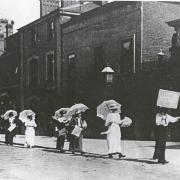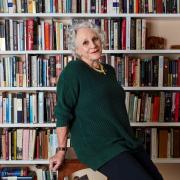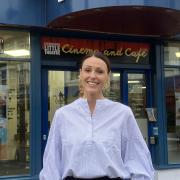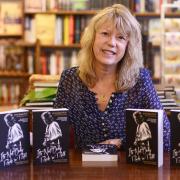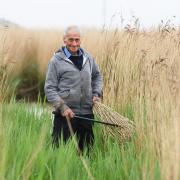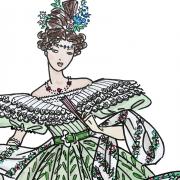A J Caley, was a chemist, chocolatier and enlightened entrepreneur who helped to revive Norwich's fortunes, says Chris Armstrong, a little like Roald Dahl's Wonka.
Albert Jarman Caley deserves, I feel, to be remembered as readily as Jeremiah Colman. Both headed large commercial enterprises, both contributed hugely to the economic recovery of Norwich after the decline of the worsted industry, both were – for their time – quite exceptionally tolerant and magnanimous employers and both were fine examples of the huge Non-Conformist contribution to building a prosperous Britain.
If anything, it could be argued that Caley is slightly the more deserving of our regard and respect. Colman’s splendid achievement was to convert an existing small business into a huge one with international ramifications. Caley built his business from scratch.

What is more, at one stage he made a major strategic decision primarily based not on perceived business benefit, but on the premise that it would benefit his employees. The fact that it turned out to be highly profitable was a well-deserved reward!
Caley’s family, although they had owned land in Norfolk for centuries, actually lived in Windsor, where his parents owned a department store which later became part of the John Lewis Partnership. Caley was educated nearby, at Eton, and subsequently trained as a chemist, marrying Elizabeth Bain, the daughter of the owner of a famous bookshop in central London.
Bain’s of 1, Haymarket was an institution much loved by bibliophiles. When they were first married Caley and his wife appear to have lived above the shop - when I was researching Caley a few years back I discovered that the Old Etonian Association still had that as his current address!
In fact, he moved to Norwich and in 1857 set up as a retail chemist and was soon joined in partnership by Octavius Corder in a small shop in London Street. In those days, medicines were often dispensed in potable form, and Caley decided to expand by manufacturing these, initially in the cellar of the London Street shop.
He was immediately successful and soon had to move this part of the business to a new site in Bedford Street. He outgrew the new premises too but his next move took a long time to complete. He purchased a disused glove factory at Chapel Field, a location at which the company was to remain until its closure in 1996. He bought the premises in 1879 – just opposite the Crescent on which he lived at the time, but production could not begin until he had drilled down 300 ft to locate a suitable water source and he then had to spend a year pumping the water to remove any impurities.

Whether by luck or judgement he had chosen an excellent site – 50 years later Lincolne Sutton, the Public Analyst for Norwich, described the water as being of exceptional quality and purity. The site was convenient – the surrounding area was largely residential but was also the site of the penny-farthing cycling races which were popular at the time.
It was 1880 before serious production could begin but then Caley moved rapidly to expand his range of products from the mainly medicinal to include drinks such as ginger beer, cloudy lemonade, soda water, seltzer and ginger ale. All factory workers were male, and worked very long hours from 0800 to 1900, six days a week, though boys under the age of 18 were allowed a ‘half-day’ on Saturdays finishing at 4pm.
Sundays were sacrosanct. Caley was a member of the Plymouth Brethren and would allow no work on the Lord’s Day. Indeed, it was his habit to visit the factory shortly before midnight on Saturdays in the summer, when even longer hours were worked, to ensure ‘the taps were turned off’ so that production had to cease.

Caley at this stage did not employ more than a couple of office staff, or any sales staff. He managed those aspects of the business himself, and later with the help of his son.
The scale of the market he developed reflected not just the exceptionally high quality of his products, but his own brand of marketing genius. Today ‘white labelling’ (where a company re-brands a product to make it look as though they have manufactured it, when they haven’t) is a common enough practice but Caley must have been one of its earliest exponents.
In the Norfolk Record Office is a record of a stock-taking in which – as well as all the materials needed for manufacture – there are references to stocks of labels for a large number of West End clubs and hotels, to be affixed to the bottles before they left the factory. Caley’s became the manufacturer of choice for royalty.
Not only did they secure Royal Warrants from both Queen Victoria and King Edward VII but when, in 1901, the future George V made a world tour in the SS Ophir, arrangements had to be made to supply Caley products to all corners of the earth.
As the business grew, so did the workforce and the number of men employed grew to 700. Mineral waters were a seasonal product, and the medicines alone were not enough to keep this number occupied in the winter season.

This was a real concern to Caley who, although expecting his employees to work long hours cared greatly for their welfare. Laying off hands seasonally caused, he knew, real hardship and he determined to find a means of keeping people employed throughout the year.
The obvious solution to the problem was to find a product that was equally subject to seasonal changes in demand but with the high demand in winter, the lower in summer. Caley concluded that the answer was cocoa, following the example of the Quaker family, the Frys.
There was only one snag – he knew nothing about its manufacture. What he did know was that if he was going to manufacture cocoa it had to be of the finest quality.
Caley used his imagination – adding extra bays to his factory, he negotiated with the manufacturers of the plant needed to make the drink and reached an arrangement with them that, in return for the contract to buy the plant, they would second staff to Caley’s to run it themselves, while training up Caley’s staff.
As with the mineral waters Caley demanded the highest standards. Both mineral waters and cocoa were manufactured by mechanical process but the levels of cleanliness were exceptional for the time – each bottle was sterilised twice before it could be used.

The quality of the product reflected the exceptional purity of the water he used and the use of milk only from the finest herds. To ensure satisfactory quality he even had the cocoa beans used in the process imported directly from Caracas to Norwich.
Cocoa, and the homeopathic derivative he invented, ‘Cocoamel’ were instant successes. By now he had begun to employ representatives and they kept reporting that shopkeepers were always asking why Caley didn’t add chocolate to his product range.
He decided to give it a try. Early attempts were fairly amateurish. First the various flavours and ingredients were boiled in a saucepan and, then when they had cooled were decanted into a kettle.
Meantime a cork had been pressed repeatedly into a slab of starch and the resulting indentations were lined by hand with cocoa powder before being filled from the kettle and covered over with another dusting of cocoa powder. The result was felt to be worth developing, and Caley with his usual commitment to quality, employed only the best to take on the task.
He employed a M. Louis Olgard, formerly the chocolatier to the French Imperial Court. Olgard in his turn broke with a Caley tradition and the company for the first time employed female workers.
The resulting products certainly hit the spot and their sale was enhanced by some remarkably colourful and attractive designs for posters and chocolate box tops produced by a young apprentice at a nearby lithographers. So impressed by this young man were the senior management that they took him over to Leipzig where they were exhibiting at an international exhibition as part of their team.

While there he painted an engaging picture of their stand. The apprentice concerned was Alfred (later Sir Alfred) Munnings who was to become President of the Royal Academy.
There is a lovely anecdote about the Leipzig picture, but one to whose truth I cannot attest. It is to the effect that when Lord Mackintosh, whose company had taken over Caley’s in the 1930s was due to retire the original painting happened to be for sale by auction.
Lord Mackintosh, feeling it would be a nice memento of his career, sent an agent to the auction to bid for it, not knowing that some members of his Board feeling that it would be a suitable retirement present had done the same, and that the price rocketed as the two sought to outbid each other.
Albert Caley, sadly, lived for only a year after his retirement in 1894, at which his staff presented him with an illuminated address concluding ‘Some of us have worked for you over a quarter of a century, all of us wish we could serve you longer’.
Even allowing for the Victorian tendency to eulogy this sentiment was probably genuine enough. He had always set the highest standards of working conditions, provided for and encouraged their leisure activities, and above all, taken the huge but successful gamble to move into cocoa and chocolate specifically to protect their jobs in the winter months. A truly enlightened Norfolk entrepreneur.
A fuller account of the story of Albert Caley can be found in Chris Armstrong’s book Mustard, Boots & Beer (Larks Press, 2014)













